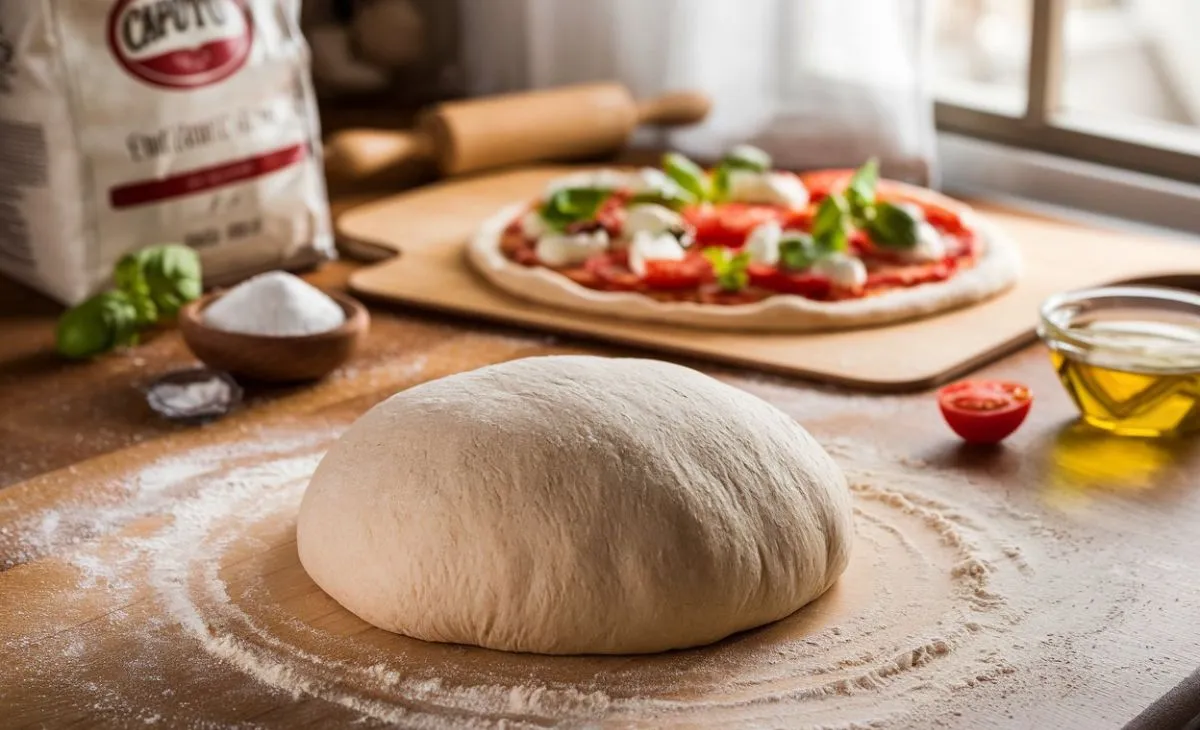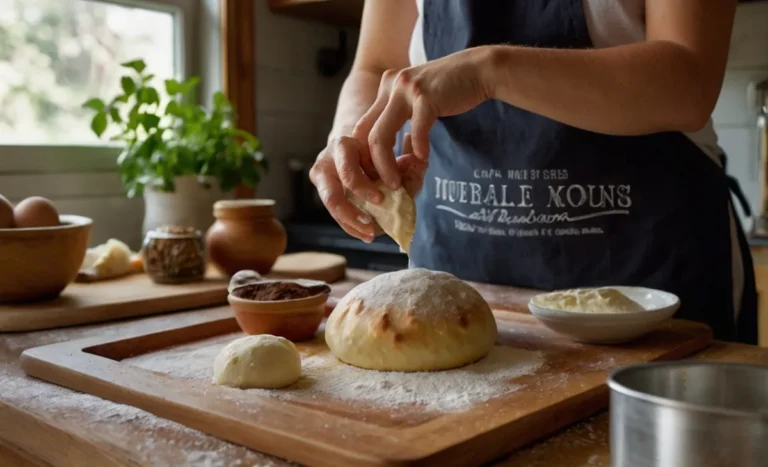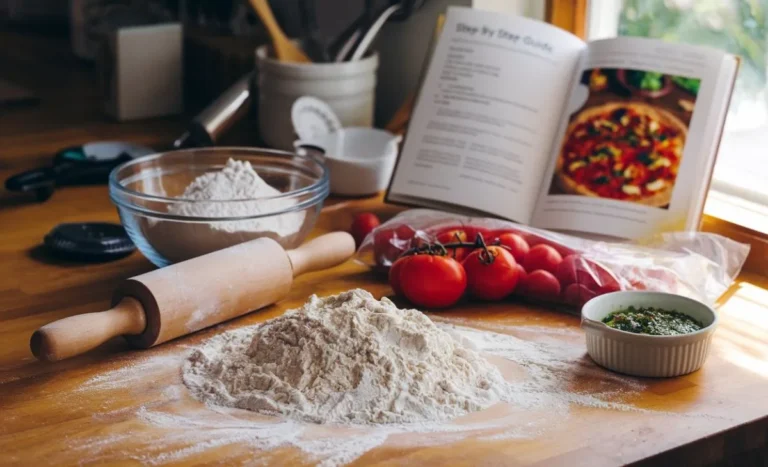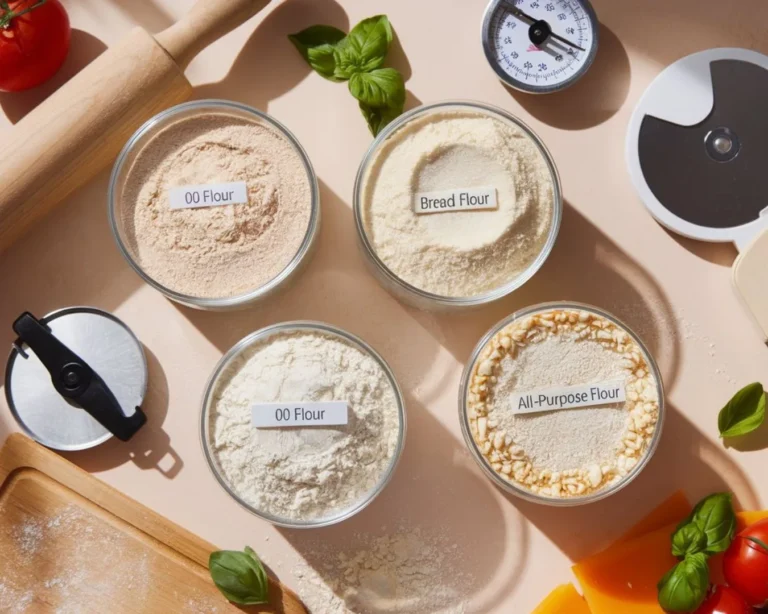Caputo Pizza Dough Recipe Explained: Step-by-Step Instructions for Beginners
Introduction to Caputo Pizza Dough
When it comes to pizza, the foundation is everything. The Caputo pizza dough recipe stands out among many due to its authentic Italian roots. Known for its exceptional quality, Caputo flour is milled from high-protein wheat, ensuring a chewy and flavorful crust. This flour is a staple in pizzerias across Naples, where pizza-making is an art form.
Incorporating a few key ingredients, Caputo pizza dough yields delicious results. The basic recipe includes flour, water, salt, and yeast. These ingredients work together to create a dough that rises beautifully and develops a great texture. As you learn to master this recipe, you will discover how each element plays a vital role in achieving that authentic taste.
Moreover, the Caputo pizza dough is versatile, perfect for various styles of pizza. Whether you prefer a classic Margherita or a more inventive topping, this dough will support your culinary creativity. By following the simple steps outlined in this guide, even beginners can achieve restaurant-quality pizza at home.
Finally, understanding the fundamentals of Caputo pizza dough opens the door to endless possibilities. The right techniques and patience lead to a perfect dough that is crispy on the outside and soft on the inside. Prepare to impress your family and friends with your homemade pizza skills by diving into the Caputo pizza dough recipe!
Essential Ingredients for Caputo Pizza Dough
Creating a delicious pizza starts with the right ingredients. The Caputo pizza dough recipe requires just four essential components: Caputo flour, water, salt, and yeast. Each ingredient plays a crucial role in achieving the perfect texture and flavor. Understanding these ingredients will set you up for success as you embark on your pizza-making journey.
First, let’s talk about Caputo flour. This finely milled Italian flour is known for its high protein content, making it ideal for pizza dough. It has a unique ability to absorb water, resulting in a dough that is both elastic and extensible. This characteristic allows you to stretch the dough without tearing, leading to that classic Neapolitan crust. Using authentic Caputo flour is key to achieving restaurant-quality results.
Next, water is equally important in the dough-making process. The right water temperature can impact yeast activity, so use lukewarm water to help activate the yeast effectively. Additionally, the quality of water matters; filtered or bottled water is often recommended for the best results. This ensures that your dough rises perfectly and develops an excellent flavor.
Salt enhances the flavor of your pizza dough and also strengthens the gluten structure. It should be added after mixing the flour and water to avoid direct contact with yeast initially. Finally, yeast is the magic ingredient that helps your dough rise. Using active dry or instant yeast will yield excellent results. By carefully selecting and measuring these ingredients, you’ll be well on your way to mastering the Caputo pizza dough recipe!
Step-by-Step Instructions for Making the Dough
Making pizza dough from scratch is easier than you might think! With the Caputo pizza dough recipe, you’ll learn how to create a delicious base for your favorite toppings. This step-by-step guide will walk you through the entire process, ensuring your pizza turns out perfect every time. Let’s dive into the details and get started on your pizza-making adventure!
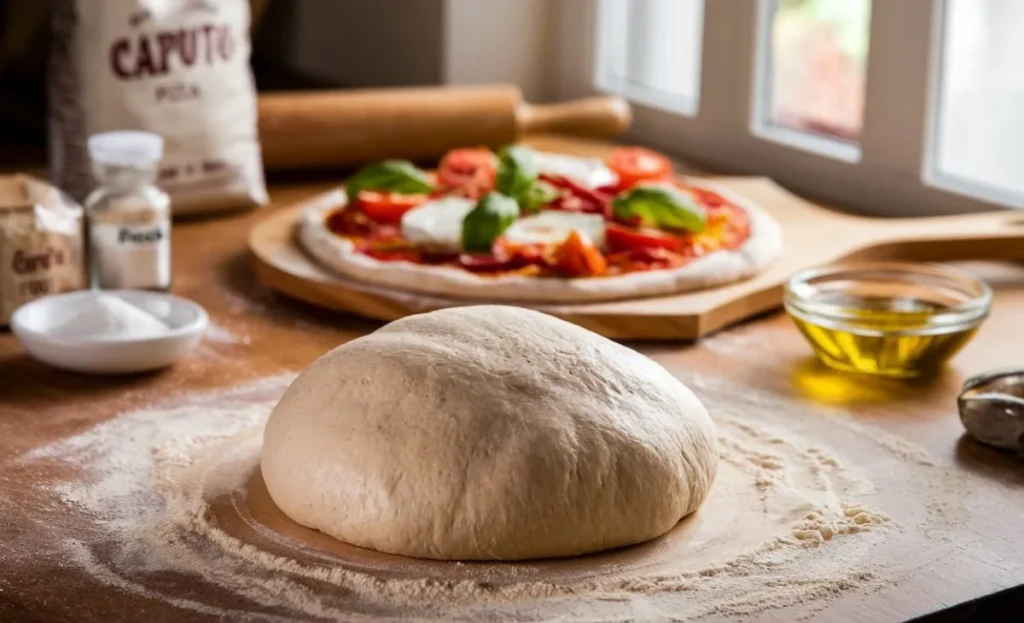
Ingredients:
- 4 cups (500g) Caputo flour
- 1 ½ cups (375ml) lukewarm water
- 1 teaspoon (5g) active dry yeast
- 1 teaspoon (5g) sea salt
Step 1: Activate the Yeast
Start by activating your yeast. In a small bowl, mix the lukewarm water with the active dry yeast. Allow it to sit for about 5-10 minutes until it becomes frothy. This step ensures that the yeast is alive and ready to work its magic.
Step 2: Combine the Dry Ingredients
In a large mixing bowl, combine the Caputo flour and sea salt. Mix the two together until they are evenly distributed. This is crucial because it helps the salt to strengthen the gluten in the dough while preventing direct contact with the yeast.
Step 3: Mix the Dough
Once the yeast is frothy, create a well in the center of the flour mixture. Slowly pour the yeast-water mixture into the well, using a spatula or your hands to gradually incorporate the flour from the edges. Continue mixing until the dough begins to come together.
Step 4: Knead the Dough
Transfer the dough to a floured surface and knead it for about 10-15 minutes. Use the heel of your hand to push the dough away, then fold it back over itself. Repeat this process until the dough is smooth and elastic. If the dough feels too sticky, sprinkle a little extra flour as needed.
Step 5: Let It Rise
Place the kneaded dough in a lightly oiled bowl, cover it with a damp cloth, and let it rise in a warm spot for about 1-2 hours. The dough should double in size during this time.
Step 6: Shape and Store
After the dough has risen, gently punch it down to release any air bubbles. Divide the dough into portions, shaping each into a ball. If you’re not using the dough immediately, wrap it tightly in plastic wrap and refrigerate it for up to 48 hours.
With these step-by-step instructions, you’re well on your way to mastering the Caputo pizza dough recipe! Enjoy the satisfaction of creating a fresh, homemade pizza that you can customize to your liking.
Tips for Kneading and Mixing
Kneading and mixing are essential steps in the Caputo pizza dough recipe. These techniques help develop gluten, which gives your pizza dough its structure and elasticity. With the right approach, you can achieve a smooth and stretchy dough that will rise beautifully. Here are some valuable tips to enhance your kneading and mixing process.
First, always start with the right ingredients. Ensure your Caputo flour is fresh, as this will impact the dough’s quality. When mixing the ingredients, gradually incorporate the flour into the yeast mixture. This helps prevent clumps and allows for a more uniform texture. Additionally, using lukewarm water (around 100°F or 38°C) activates the yeast effectively, promoting better fermentation.
Next, when it comes to kneading, timing is crucial. Aim for about 10-15 minutes of kneading. To knead effectively, push the dough away from you using the heel of your hand. Then, fold it back over itself and rotate it. This method helps develop gluten strength, ensuring your dough will stretch without tearing. If the dough becomes sticky, sprinkle a bit of extra flour to maintain the right consistency.
Lastly, be patient during the resting phase. After kneading, let the dough rise in a warm environment until it doubles in size. This resting period is vital for flavor and texture development. Remember to cover the dough with a damp cloth to prevent it from drying out. By following these tips, you will master the kneading and mixing techniques required for your Caputo pizza dough recipe, leading to restaurant-quality results at home.
Understanding Fermentation and Resting
Understanding fermentation and resting is crucial when following the Caputo pizza dough recipe. These processes significantly impact the flavor and texture of your pizza crust. Fermentation allows the yeast to work its magic, creating carbon dioxide and alcohol. This not only helps the dough rise but also develops complex flavors that enhance your final pizza.
First, let’s explore fermentation. After mixing and kneading the dough, it’s essential to let it ferment in a warm environment. This initial rise can take anywhere from 1 to 2 hours, depending on the temperature. During this time, the yeast consumes sugars in the flour, producing carbon dioxide bubbles. These bubbles create the airy structure in your crust. Therefore, don’t rush this step, as proper fermentation leads to a light and flavorful pizza.
Next, the resting period plays a vital role in dough development. Once the dough has risen, it’s essential to punch it down to release excess gas. After that, let it rest for another 30 minutes to 1 hour. This resting period allows the gluten to relax, making it easier to shape the dough. If you skip this step, you may end up with a tough and chewy crust.
Finally, patience is key. Allowing your dough to ferment and rest enhances its flavor profile, leading to a more authentic Neapolitan pizza experience. Remember, the Caputo pizza dough recipe is about more than just mixing ingredients; it’s about understanding the science behind each step. By respecting the fermentation and resting periods, you’ll achieve a dough that is both flavorful and easy to work with, ensuring your homemade pizza is a delicious success.
Shaping and Stretching Your Dough
Shaping and stretching your dough is a crucial step in the Caputo pizza dough recipe. Mastering this technique will ensure your pizza has the perfect crust. Properly shaped dough allows for even cooking and a delightful texture. Therefore, it’s essential to handle the dough with care and patience as you prepare it for the oven.
To begin, lightly flour your work surface and your hands. This prevents the dough from sticking and makes it easier to handle. Gently remove your risen dough from the bowl, taking care not to deflate it too much. Divide the dough into equal portions, usually about 250 grams for individual pizzas. Form each portion into a round ball and let them rest for about 20 to 30 minutes. This resting period allows the gluten to relax, making it easier to stretch later.
Next, it’s time to stretch the dough. Start by flattening one dough ball with your fingers into a small disc. Use your fingers to gently press from the center outwards, creating a thicker edge for the crust. Then, lift the dough and let gravity do some of the work. As you rotate the dough, gently stretch it by pulling at the edges. If it resists, don’t force it—simply let it rest for a few minutes and try again. The goal is to achieve a thin center while maintaining a slightly thicker rim.
Finally, ensure your shaped dough has an even thickness throughout. This will promote even cooking and prevent tearing. Once you’ve achieved the desired shape, it’s ready for toppings. Remember, the way you shape and stretch your dough greatly influences the final result. By following these techniques in your Caputo pizza dough recipe, you’ll be on your way to creating a delicious, restaurant-quality pizza right at home.
Baking Your Pizza to Perfection
Baking your pizza to perfection is the final step in the Caputo pizza dough recipe. This crucial phase determines the overall texture and flavor of your pizza. A well-baked pizza has a crispy crust, perfectly melted cheese, and evenly cooked toppings. Therefore, understanding the right baking techniques is essential for achieving restaurant-quality results at home.
First, preheat your oven to its highest setting, usually around 475°F to 500°F (245°C to 260°C). If you have a pizza stone, place it in the oven during the preheating process. This allows the stone to absorb heat, creating a perfect environment for baking. The intense heat from the stone helps develop a crispy crust while ensuring the inside remains soft and chewy. Be patient, as this step significantly influences the quality of your final product.
Once the oven is hot, it’s time to bake your pizza. Carefully transfer your shaped dough onto a floured pizza peel or baking sheet. Add your desired toppings, but be mindful not to overload your pizza. Too many toppings can lead to a soggy crust. After assembling, slide the pizza onto the preheated stone or baking surface. Bake the pizza for about 8 to 12 minutes, or until the crust is golden brown and the cheese is bubbly.
Finally, keep a close eye on your pizza as it bakes. The ideal baking time can vary depending on your oven and the thickness of your crust. Once it’s ready, use a peel or spatula to remove it from the oven. Let the pizza cool for a minute before slicing. This resting time allows the cheese to set slightly, making for cleaner cuts. By mastering the baking process in your Caputo pizza dough recipe, you can create delicious, perfectly baked pizzas every time.
Top 5 Tips for Making Authentic Neapolitan Pizza with Caputo Pizza Dough Recipe

